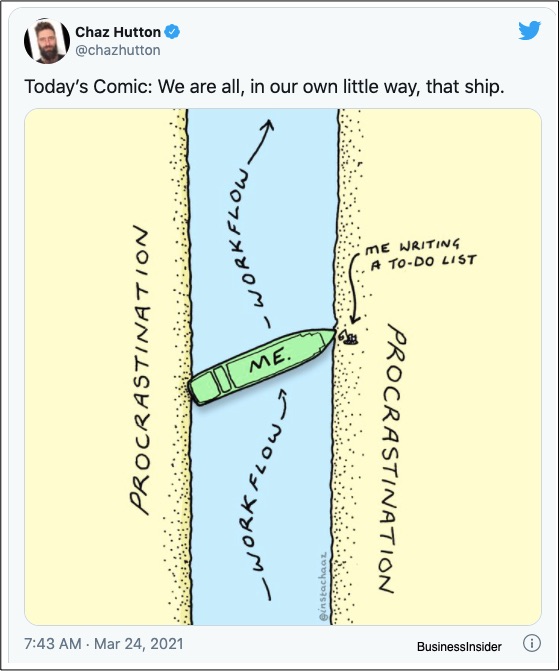Today, let’s start with some canal geography:

As a 120 mile shortcut that connects Europe and Asia, the Suez Canal has been around since 1869:

When a gargantuan container ship wedged itself into the Suez Canal, the impact rippled around the world.
The Suez Canal Blockage
On March 23rd, perhaps because of a gusty sandstorm, the Ever Given found itself nudged diagonally into the side of the Suez Canal. The ship is approximately as long (1,300 feet) as the height of the Empire State Building:

The Ever Given had been taking cargo from China’s Yantian District to Rotterdam, Netherlands. You can see below where it got stuck:

The problem was figuring out how to dislodge the vessel. This was one suggestion:

Meanwhile, the BBC showed some other possibilities:

Expert salvage teams were flown in when dredging failed to dislodge the ship’s hull:

The Ever Given delayed cargoes that ranged from concrete to crops and live animals to clothing. Seventeen ships were carrying crude oil:
Normally, these are the ships that pass through the Suez Canal. The number represent percentages for 2019:
Our Bottom Line: Transportation Infrastructure
During the 19th century, the U.S. transportation infrastructure was composed of roads, canals, and railroads. However, our march toward a national market that linked the East and West was initiated by the completion of the Erie Canal in 1825 and then a slew of copycat canals.
Still today, reflected by the impact of a canal blockage, we can see that canals remain crucial links in the world’s supply chains.
But let’s conclude with the canal’s connection to us:

My sources and more: My Bloomberg supply chain email (un-gated) took me to a gold mine of Suez articles, including The Guardian and the BBC. As the source of all the memes, BusinessInsider (now called Insider) was the best though. (Please note that the ship is still stuck.)








